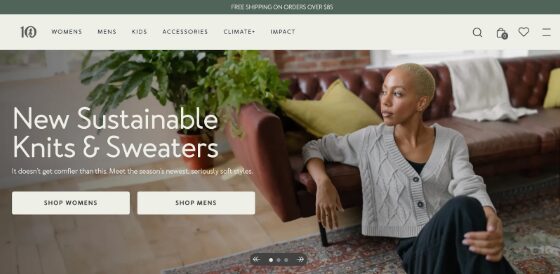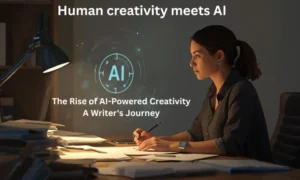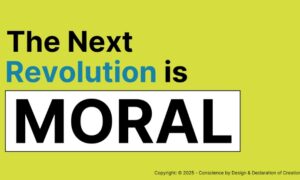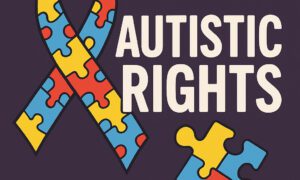Let me start with something a bit uncomfortable: most people don’t trust your website. It’s not personal. It’s just… the internet. According to a 2023 report by Stanford’s Web Credibility Project, 75% of consumers judge a business’s credibility based solely on its website design. That’s not your product, your Google rating, or your heartfelt mission statement. Just the way your site looks.
Now, throw that number into the bustling business ecosystem of Charlotte, North Carolina, where local competition is fierce and attention spans are shorter than a southern summer rainstorm. Suddenly, that outdated theme or auto-playing video could be costing you not just clicks but real money.
This is where Above Bits (AB) comes in — a name that’s been around long enough to remember when “responsive design” just meant someone picked up the phone. AB has been designing and refining websites for almost two decades, and over the years, we’ve seen the link between trust and design become everything. And yet, somehow, most people still treat web design like an afterthought.
Let’s fix that.
A Story of Skepticism (That Started With a Broken Contact Form)
Not too long ago, a new client came to us at Above Bits with a dilemma: their website was modern, colorful, mobile-friendly, and had all the right buzzwords. But conversions were flatlining. The culprit? Their “Contact Us” button looked more like a suspicious ad than a trustworthy action.
It turns out that design trust cues — such as button size, font consistency, spacing, and even color contrast — play a significant role in user behavior. The layout screamed “scammy pop-up” rather than “credible business.” This isn’t just speculation. Adobe’s 2024 global consumer survey found that 38% of users will stop engaging with a site if the content or layout is unattractive.
And here’s where it gets really relevant to web design in Charlotte. Our city is growing fast. The Charlotte Regional Business Alliance reported that more than 100 people move to Charlotte daily, many of whom start new ventures, businesses, or seek services. These fresh eyes are visiting your website for the first time — and if it looks sketchy, you’re out of the running in seconds.
The Subconscious Math Behind Web Trust

There’s a fascinating term in behavioral psychology called “thin slicing.” It refers to the brain’s ability to make snap judgments based on a minimal amount of data. When it comes to websites, that slice is often less than 0.05 seconds, according to a study from Google Research Labs.
So when someone lands on your homepage, their brain is doing complex mental gymnastics like:
“Does this look safe?”
“Is this business legit?”
“Can I trust them with my credit card?”
And whether you like it or not, your design choices are answering those questions — silently, instantly, and often harshly.
Now, if you’re running a business in Charlotte, you can’t afford to look untrustworthy, especially when local competitors have hired designers who understand this kind of psychology.
When Design Becomes a Liability (Yes, Even That Slider)
Let’s talk about that full-width image slider you love so much. You know the one with six high-res pictures of smiling staff, zooming by like a race car at Lowe’s Motor Speedway. It might look impressive to you, but globally, sliders are one of the most disliked design features by users.
In fact, the Nielsen Norman Group, a UX research firm, has found that only 1% of users click on sliders, while the rest either ignore them or become annoyed. And don’t get me started on the ones that autoplay with no pause button.
This is a significant issue for web design in Charlotte, where many small businesses aim to appear modern but often end up copying trends they don’t fully understand. We’ve seen plenty of “fresh” designs that actually undermine trust because they’re too flashy, too fast, or just too confusing.
At Above Bits, we often strip those sliders out entirely, replacing them with cleaner layouts, subtle microinteractions, or simply plain text that conveys the point quickly. Design doesn’t need to shout. It just needs to guide.
Design Styles and the Geography of Trust
Here’s a peculiar yet real fact: trust-based design varies by region. A design that builds trust in Berlin might fall flat in Charlotte. European users tend to trust minimalism. East Asian audiences favor compact, high-information layouts. However, in the southeastern U.S., where culture is friendly and relationship-driven, your design must reflect warmth, familiarity, and a hint of polish.
And here’s where web design in Charlotte gets extra nuanced. Charlotte is part financial hub, part hip startup town, and part Southern community. Therefore, the perfect design must strike a balance between corporate credibility and neighborhood charm.
At AB, we’ve found that including real team photos (not stock models), friendly typefaces, soft color palettes, and straightforward call-to-action (CTA) buttons drastically increases engagement. In fact, we ran a test on one Charlotte-based client where just swapping stock photos for real ones improved trust metrics (measured via HotJar and Crazy Egg) by over 27%.
Design is local. And you need a partner who lives and breathes that reality.
The Tools of Trust: Not Just What You Use, But How

Now, let’s get a little techy (because yes, that’s my love language). We’re living in the age of Figma, Adobe XD, Webflow, and Tailwind CSS. Tools like these have completely changed how we think about layout, responsiveness, and consistency.
Figma, especially, has revolutionized collaborative design. Designers, developers, and clients can work together in real-time, resulting in fewer miscommunications and faster deployment. And it’s not just startups using it. Microsoft, Uber, and even The New York Times have moved their entire UI design pipelines into Figma.
But with great tools comes great misuse. Over-styled pages, inefficient layouts, and bloated CSS are everywhere. Just because you can animate a button doesn’t mean you should. Too many design firms in North Carolina (and globally) focus on aesthetics without thinking of function.
This is where Above Bits stands out. We’ve been around long enough to recognize that good design isn’t about showing off. It’s about creating digital environments that feel intuitive, safe, and frictionless. That’s what trust is built on — not gradients and hover effects.
And if you’re wondering how we maintain that without breaking the bank, yes, our pricing is affordable. Always has been. We’re not here to upsell you into a design you don’t need. We’re here to build what works.
You can learn more at abovebits.com. But let’s keep going — this story isn’t over yet.
What Happens When a Website Breaks Trust?
Let’s say your site looks great on your desktop. That sleek header, those carefully chosen fonts, and the gradient backgrounds — perfect. Now open it on your phone. Suddenly, buttons are crammed, text overlaps like it’s stuck in a traffic jam on I-77, and everything just feels off.
This is the real world in 2025. According to Statista, over 58% of global website traffic comes from mobile devices, and this number is even higher in regions such as the southeastern U.S., where on-the-go browsing is particularly prevalent. And you guessed it — if your site doesn’t work well on mobile, you’ve already lost the trust game.
This matters deeply for web design in Charlotte, where businesses are engaging customers across a city that’s mobile-savvy, fast-paced, and culturally diverse. A poorly designed mobile site isn’t just inconvenient; it’s also ineffective. It screams: we didn’t care enough to make this right.
At Above Bits, we test mobile responsiveness across actual devices — not just browser simulators — because we’ve learned the hard way that Chrome Dev Tools doesn’t always tell the truth. You need to know how your site behaves on an iPhone 11, a Galaxy A12, and that one stubborn Kindle browser.
The Data Doesn’t Lie: Design Affects Everything
Let’s talk bounce rates. You know, the percentage of users who visit your site and leave within seconds. According to Google’s latest UX report, a delay of just 2 seconds in page load time increases bounce rates by 32%. That’s not a typo. Two seconds.
Add this to the fact that visually unappealing or confusing layouts compound bounce even more, and suddenly, your “unique design idea” that looks like a Pinterest collage becomes a silent conversion killer.
In the context of web design in Charlotte, where real estate, fitness, retail, and hospitality businesses are constantly battling for online attention, design isn’t just aesthetics — it’s the funnel. From the homepage to the cart, from the landing page to the booking form, every pixel needs to pull its weight.
Above Bits (AB) often rebuilds websites that look “modern” but perform like a sinking ship. We run Lighthouse audits, WebPageTest speed reports, and compare against conversion heatmaps to diagnose where trust gets lost. Sometimes it’s the color palette. Sometimes it’s a script-heavy theme from ThemeForest. Sometimes — let’s be honest — it’s just bad design pretending to be good.
Remember When Websites Had Flash Intros? Yeah, We Do Too.
If you’ve been on the internet since the early 2000s, you probably remember Flash—those intros with “Skip” buttons, cheesy soundtracks, and animated text. Back then, it was groundbreaking. Now, it’s a cautionary tale.
The web design world moves fast. In just five years, we’ve seen full-screen video headers come and go, brutalist design trend and recede, and AI-based website builders rise like hotcakes — only to fizzle when people realized machine-made websites lack soul.
This is something we constantly emphasize at Above Bits. Design isn’t timeless — it evolves. And that’s precisely why having almost 20 years of experience matters. It’s not about being stuck in the past; it’s about knowing what didn’t work then so you can build smarter now.
And in Charlotte, where companies are increasingly blending traditional Southern hospitality with sleek modern branding, this historical perspective isn’t just helpful — it’s necessary.
How Not to Let AI Ruin Your Website’s Soul
Look, I’m not against AI. I use it every day. We even integrate tools like ChatGPT into content planning, and Midjourney or DALL·E into prototyping for image concepts. However, there’s a concerning trend: people are building entire websites using AI, adding a chatbot, and calling it a day.
That works if you’re testing an idea or need a temporary landing page. But long-term? Web design in Charlotte (and frankly, anywhere) still requires human nuance. Humor, tone, cultural awareness, accessibility — these things don’t happen by accident. They happen by design.
At AB, we’ve worked with clients who came to us after trying AI site builders and quickly realized that nothing quite replaced a conversation with a real designer. One client even told us, “My AI-made site looked nice, but it just didn’t feel like us.”
Web design is identity. And identity can’t be templated.
Honesty, Layouts, and the Trust You Can’t Fake
Want a weird statistic? The color blue is the most widely used in trustworthy websites. Banks, hospitals, and law firms all lean on blue tones to create a sense of calm and reliability. But here’s the kicker: if everyone uses blue, how do you stand out?
The answer is subtle: contrast, spacing, narrative layout, and hierarchy. It’s not just what you say. It’s how it’s arranged, how the visual flow guides the user. When you break a pattern to draw attention, these are things that aren’t taught by drag-and-drop tools — they’re learned through years of design thinking, feedback loops, and user testing.
AB gets that. Because, after nearly two decades, we’ve internalized not just the trends, but the patterns behind them. That’s why our projects don’t just look good — they feel good.
And in Charlotte, North Carolina — where your site might be your only shot at a first impression — that feeling is what wins trust.
If It Looks Like a Scam, People Will Treat It Like One
Let’s wrap up with a hard truth: you could be completely legitimate, but if your site looks like something out of a 2011 WordPress plugin demo, visitors will assume otherwise. That’s just how humans work. We judge books by their covers — and businesses by their homepages.
So, if your layout is cluttered, your typefaces scream Comic Sans (or even worse — Lobster), and your navigation requires people to work, they’ll click away. And they won’t come back.
That’s the difference Above Bits makes. We design sites that don’t just “pass the vibe check,” they earn trust with clean code, intentional design, and yes, local knowledge that only comes from working with businesses across Charlotte and the Carolinas for almost 20 years.
Want to see what that looks like in practice? Visit abovebits.com and see the difference for yourself.
Make Trust Your Design Goal
Web design isn’t a canvas. It’s a contract — a silent promise that says, “We’re legit. You’re safe here. Let’s do business.” Break that, and it doesn’t matter how good your offer is. No one’s staying long enough to hear it.
In 2025 and beyond, web design in Charlotte is about more than pixels. It’s about psychology, speed, adaptability, and authenticity. And if you want a partner who understands all that — and who’s been building sites since dial-up — Above Bits is ready to help.
Let’s make the internet (and Charlotte’s corner of it) a little more trustworthy, one site at a time.





































